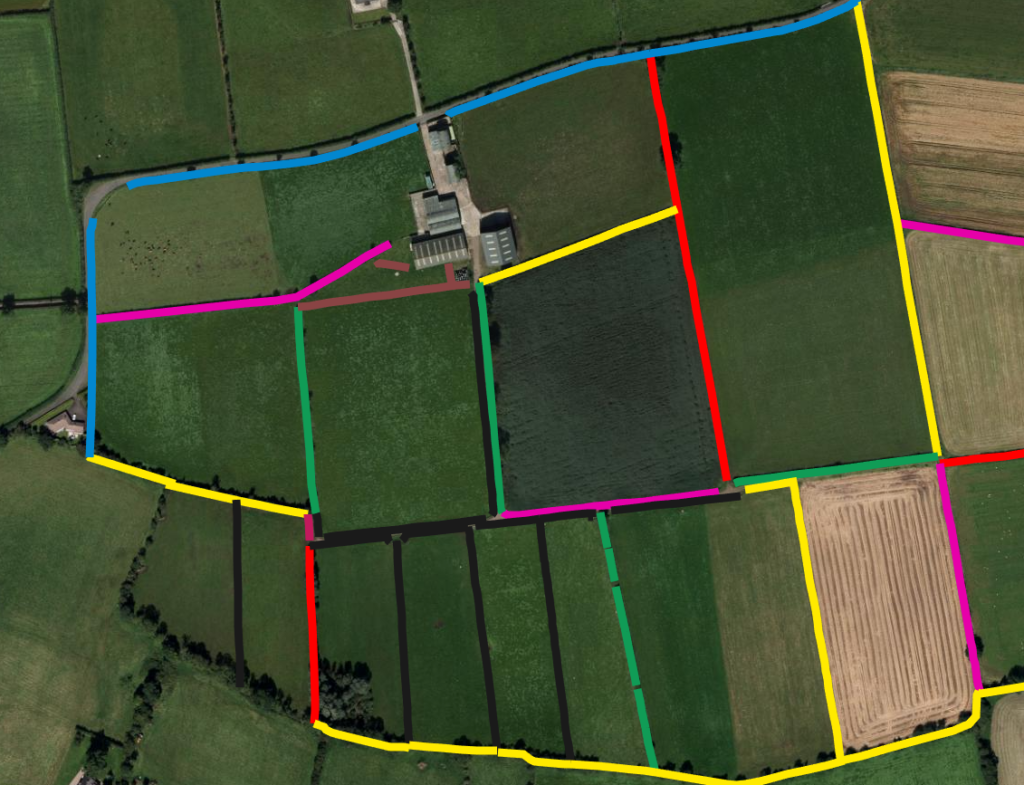Hedgerow Management for Biodiversity
Hedgerows are a priority habitat and with good management can be the most valuable wildlife resource found on many farms across Northern Ireland. They provide feeding, resting, nesting and breeding sites for invertebrates, mammals and birds as well as providing a range of other benefits including shelter and stock-proof barriers for livestock. How hedgerows are managed will affect the overall condition and biodiversity value of the hedge. Research has shown that the number of flowers and berries produced on hawthorn and other woody species is dramatically increased on hedges that are only cut every three years at most. The pollen and nectar resource at flowering is critical to allow many insect species to fulfil their lifecycle and consequently to the birds and mammals that feed on the insect population and the winter hedge berries. It is important that we manage hedgerows where we can, to maximise their flower and berry production.
The internal hedgerows across the Greenmount site are being managed on a 3-4 year rotational cut with the aim to maximise the floral and berry resource. Between a third and a quarter of the hedges in each land block will be cut every year; this will ensure that there is food available on nearby hedgerows each year of the rotation. Some of the insect species such as solitary bees will only forage up to 150m from their nests, so a mixed rotation always leaves a resource within a land block each season rather than feast or famine which happens when all the hedges are cut in the same year.
Should it look tidy?
Hedge management and consequently biodiversity is as much about what you don’t do, as much as what you do! Unfortunately, a tidy hedge or worse still a lot of tidy hedges does not achieve much for wildlife.
What does a mixed hedge cutting rotation plan look like?
A hedge management plan has been developed for the contractors to follow, please see Table 1 for the key and Figure 1 for an example.
Table 1: Hedge Management Plan Key
| Line colour | Cut year/Hedge management |
| Yellow | 1 |
| Red | 2 |
| Green | 3 |
| Pink | 4 |
| Blue | Roadside – face and top with saplings |





Figure 5 is a photo of a hedge along a laneway that is cut annually. Due to the annual cut, there is very little hawthorn bloom on this section of hedge compared to the uncut section behind the gate. Figure 6 shows how the hawthorn bloom turns into hawthorn ‘haws’ later in the year. Please note the amount of ‘haws’ on the uncut section of hedge compared to the annually trimmed lane side section of hedge.

Hedgerow Planting and Hedgerow Management Training Events
CAFRE have hosted a series of short online information webinars on Hedge Planting and Hedge Laying as part of the Environmental Farming Scheme (EFS). The webinar recordings can be found here:
Environmental Farming Scheme (EFS) Planting New Hedgerows including Two Protective Fences Webinar
Environmental Farming Scheme (EFS) Hedge Laying Information Webinar
Future CAFRE Training Courses:
CAFRE will be hosting hedge-laying courses in Autumn 2022, if you are interested in attending a hedge-laying course, please register your interest here and you will receive information on future course dates.
